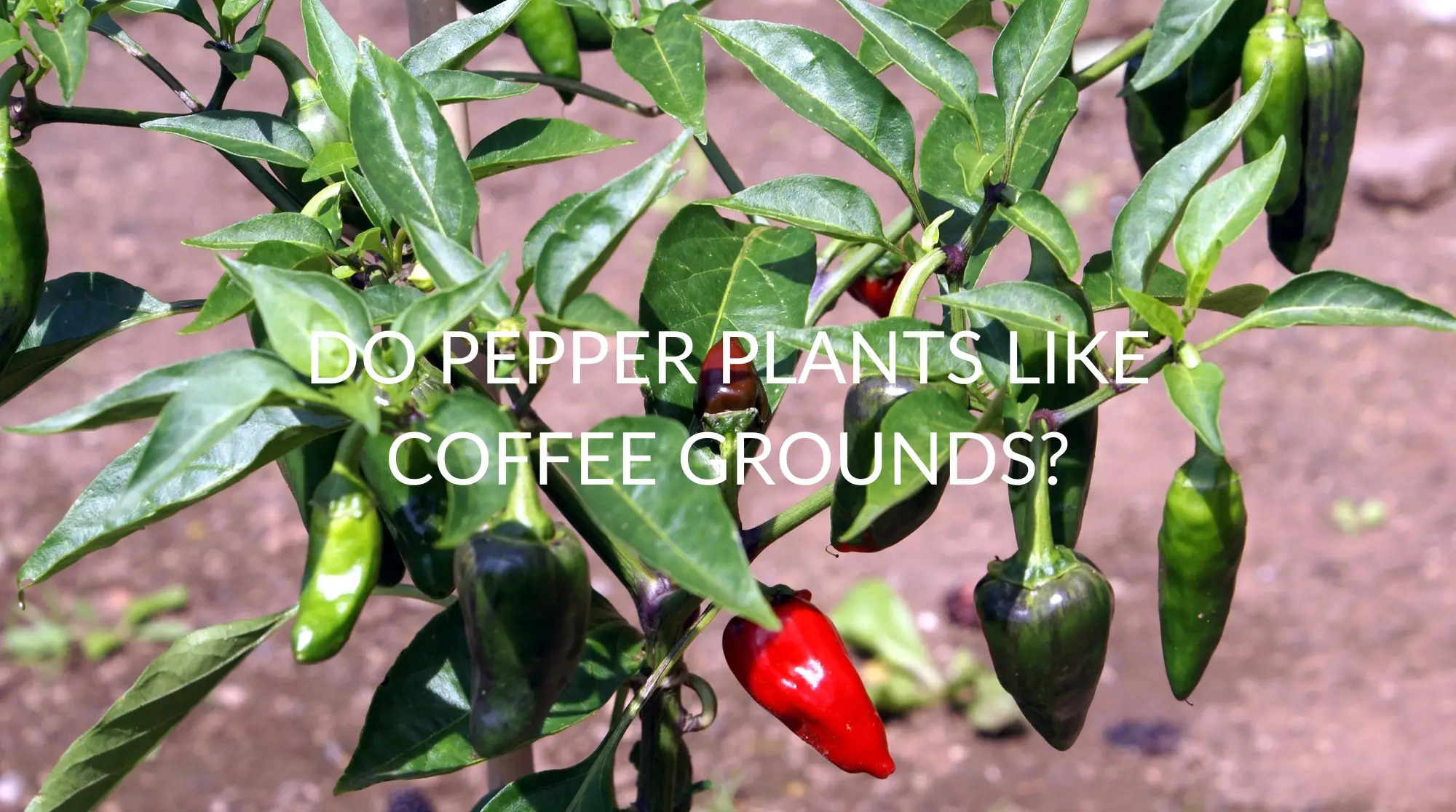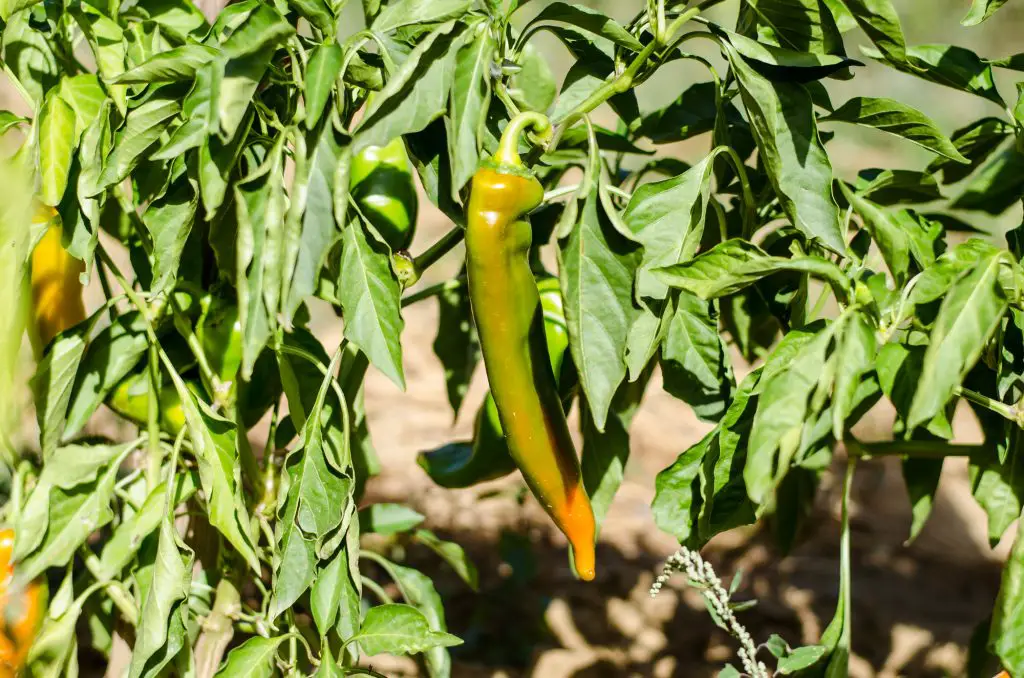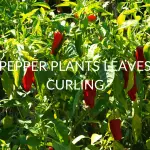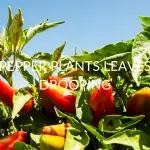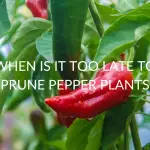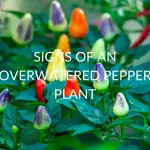It’s a well-known gardening tip that adding used coffee grounds to your flower beds can improve the overall health of your garden. The love of caffeine isn’t only shared by flowers but also by many fruit-producing plants. In this article, we’ll explore
Do Pepper Plants Like Coffee Grounds?
Coffee grounds are a great resource for any garden because they’re incredibly high in nitrogen, carbon, and phosphorus. Pepper plants thrive in nitrogen-rich soils, making your leftover espresso grounds the perfect plant food.
To unlock this nitrogen and carbon combo, you should first compost your coffee grounds. This initial breakdown of the grounds allows them to immediately release their nutrients to your plants. If you don’t want to wait to compost the grounds, dumping damp coffee grounds in the garden won’t hurt your plants. It will just take longer to break down.
What Are The Benefits Of Coffee Grounds On Pepper Plants?
A common myth is that caffeinated coffee grounds will help your plants grow faster. While this sadly isn’t true, the grounds help your plants grow leaves, provide essential vitamins and minerals, fight off harmful bacteria, repel bugs and pests, and improve soil aeration.
Leaf Growth
Because nitrogen is vital to leaf growth, the plant will explode with new growth when the grounds add nitrogen to the soil. Nitrogen is especially important in plants that may have suffered stunted growth when transplanted.
More leaf coverage means more shade, which protects more of the plant and soil from the sun. This helps maintain a cooler environment for the roots to grow and helps reduce water loss on extremely hot summer days.
Most importantly, the leaves protect the fruit from “sun scorching.” This is when the pepper fruits are in direct sunlight for too long and begin to shrivel up and burn. It’s similar to when we get a sunburn! Sweet pepper plants need to worry about this more than hot pepper plants, as sweet peppers have softer skin.
Vitamins and Minerals
While coffee grounds contain nitrogen, it also contains phosphorus and potassium, which are beneficial to any fruit-producing plant. The grounds will also break down into carbon, which is excellent for supporting overall plant health and soil health.
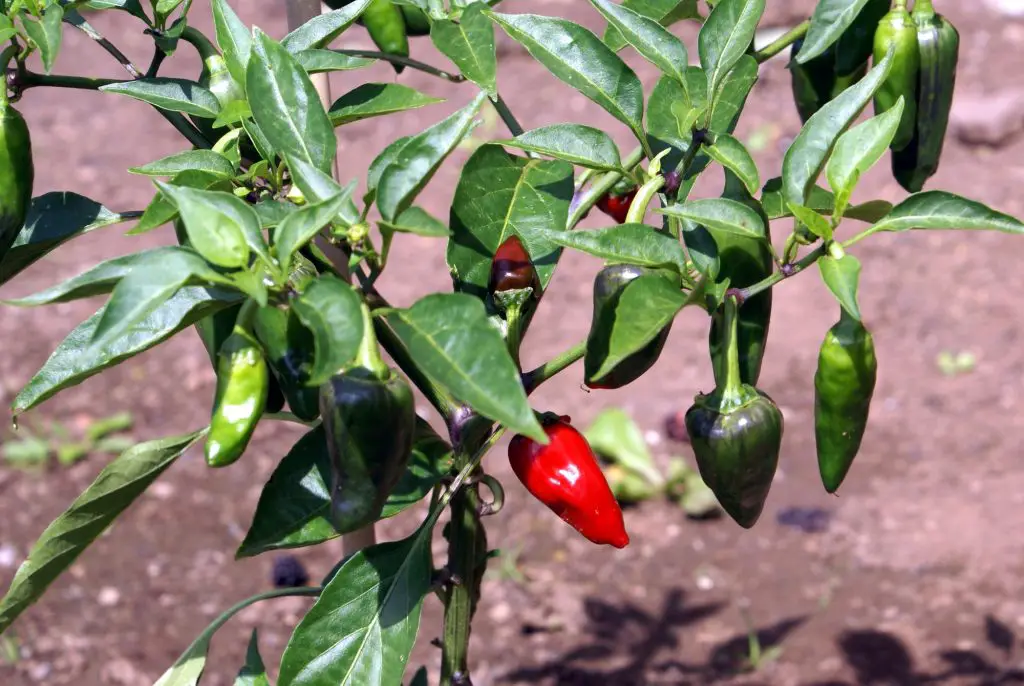
Reduced Soil Bacteria
As the coffee grounds decompose, they kill off disease-causing bacteria like Fusarium, Pythium, and Sclerotinia.
- Fusarium is notable for rotting the stems and fruit. The appearance of soft brown lesions on the branches at nodes or wound sites indicates this bacteria.
- Pythium is known for rotting the crowns and roots. The plants will grow slowly and have trouble rooting, causing many transplants to die off.
- Sclerotia rot the pepper stems from the inside out, causing overall weakness and starving the plant.
While coffee grounds are great for reducing the risks of these bacteria, it’s essential to know that the grounds will not 100% protect your plants. If you find that a plant is affected, you should immediately remove the plant and research commercial pesticide options.
Repels Pests
Because of the strong, acrid taste, most slugs, snails, and insects steer clear of coffee grind composts. They dislike the taste enough that you may not see a single one bother your plant all season long.
The same will go for some animals. Rodents and birds aren’t huge fans of burnt coffee and may stay clear of the smell. Unlike the insects, this effect only lasts a few days when the coffee still smells like coffee. After that, the birds will be all over your pepper seeds again!
Improves Soil Aeration
You manually improve soil aeration anytime you mix a substrate into the soil, so adding coffee grounds will give your soil a good boost. The grounds also attract earthworms due to their high nutrient content, further improving soil aeration.
You want to encourage aeration because it reduces compaction, oxidizes the soil, and allows the roots to grow more vigorously. This also allows water and nutrients to penetrate deeper into the ground. And on a slightly related note, earthworm waste is great for your plants!
How To Use Coffee Grounds On Pepper Plants
Different gardeners swear by different rules when adding coffee grounds to their soil. Some believe you sprinkle some over the garden, while others think you can grow the plant directly on the grounds. In the end, it’s entirely up to you.
Soaking in the Water
I’ve never tried this myself, but I’ve been told that you can soak your used coffee grounds in the water you plan on watering your plants with, and the water will add nutrients to the soil. I don’t know how the nitrogen would break down within the watering can, but I’m told the method works!
Sprinkled On Top
Sprinkling coffee grounds on top of the plants doesn’t work well for sustained nutrition but works well enough in a pinch when you’re running late for work. Rainwater or hose water will wash the grounds down to the soil, where they will sit and decompose into the nitrogen-rich substance we know and love.
Mixed in With Soil
If you’re not into composting or live somewhere that doesn’t allow it; you can mix the grounds directly into the soil around the bases of the plants. Afterward, water the plants thoroughly to encourage decomposition and water retention.
Because the grounds are never composted, the nitrogen and carbon will release slower into the soil. This is a suitable method for plants that are already well established and don’t need any emergency saving.
Composted
You can compost your coffee grounds for the top-tier result. If you choose to do this, have the compost be 20% coffee grounds, 20% green or organic material, and the remaining 60% be cardboard or paper (for the earthworms). This also helps ensure the resulting mixture is incredibly high in nutrients.
Once composted, place around 1/2 of the mixture around each plant. Do not pat the earth down; instead, mix the composted material into the topsoil.
As the Substrate
You may think I’m crazy, but hear me out. Many people use straight coffee grounds as soil, especially for plants like peppers. If you’re worried about the acidity, allow the coffee grounds to sit for a few days before using them. Rinsing the grounds also works to eliminate any remaining acidity.
You can plant seeds directly into the grounds and watch them grow. A drawback of this method is a guaranteed phosphorus deficiency. While coffee grounds have phosphorus, they don’t have enough to sustain a growing plant on their own. Adding bone meal or phosphate fertilizer solves this problem.
How Much Coffee Should You Put In A Pepper Plant?
Aim for 1/2 inch of coffee grounds around each pepper plant, then work the grounds into the topsoil. You won’t need a lot to go a long way, even if you have a high-density planting of peppers. The nutrients will slowly release into the ground over the next two months. After that, you can add another 1/2 of the grounds to the topsoil.
If your pepper plant is potted, use a little less than 1/2 per plant. It’s common to add a few heaping tablespoons of coffee grounds of compost to ensure the plant receives nutrients without overdoing it. The nitrogen has nowhere to go in the pot, and there aren’t any extra earthworms that can help eat the grounds.
Can Coffee Grounds Harm A Pepper Plant?
While coffee grounds don’t directly harm the pepper plant, you will see different results based on used and freshly ground coffee grounds. Some adverse side effects include a lack of pepper fruits and stunted growth due to a high acidity soil.
Used Coffee Grounds
Used coffee grounds won’t harm the pepper plant, but they could lead to a lack of peppers. If the nitrogen in the soil is too high, the plant will refocus all its energy on growing and maintaining new leaves. Your plant will look incredible but won’t bud or produce fruit.
You’ll be able to notice this happening before it becomes a problem. When you see more leaves than flowers or peppers, stop adding the coffee grounds to the soil. For plants that start the growing season on a solid foot, you should only need to add grounds once every 60 days (or twice in one growing season).
Fresh Ground Coffee Grounds
I wouldn’t recommend using freshly ground coffee grounds in your garden due to their high acidity. I’m talking about grounds you just made and haven’t brewed yet. These beans still have a lot of caffeine, and while that doesn’t impact the plant’s growth, it can affect the soil’s overall health.
Changing the soil’s acidity suddenly can result in shock among plants, not just your pepper plants. Anywhere the rainwater carries, those grounds can be affected. Most plants don’t like high acidity soils.
Fresh grounds will take longer to decompose and break down, meaning your pepper plants won’t receive any of the nitrogen or carbon when the plant needs it. All in all, there are more downsides to using freshly ground coffee grounds than upsides.
FAQ’s
If I Don’t Drink Coffee, Where Can I Get Coffee Grounds?
Many local coffee shops will sell you bags for $1 or hand out the grounds for free. Starbucks has greatly encouraged their baristas to package the grounds up for customers to take at their leisure (and they’re free).
Will Decaf Coffee Grounds Work?
There aren’t many differences between regular and decaf coffee grounds after the brewing cycle has been completed. Regular grounds will have very low levels of caffeine because most of it was brewed out when making the coffee. Regular and decaf grounds have the same health benefits for plants when composted.
What Other Plants Like Coffee Grounds?
Roses, blueberries, carrots, radishes, azaleas, hydrangeas, cabbages, lilies, hollies, and rhododendrons love coffee grounds mixed into the soil. Depending on the location of your hydrangeas, you may consider using freshly ground coffee grounds in the soil.
Hydrangeas have a unique property that changes their petal color based on the soil’s acidity. High acidity soils turn the flowers blue, while low acidity soils turn the flowers pink. On neutral ground, the flowers are purple.
Conclusion
Adding coffee grounds to your pepper plants’ soil is a great way to boost the nitrogen content and promote healthy leaf and stem growth. If you add too much, you may have a plant full of leaves and no pepper fruits. Adding 1/2 inch around each plant and mixing the compost into the soil is the best way to incorporate coffee grounds into your garden.

